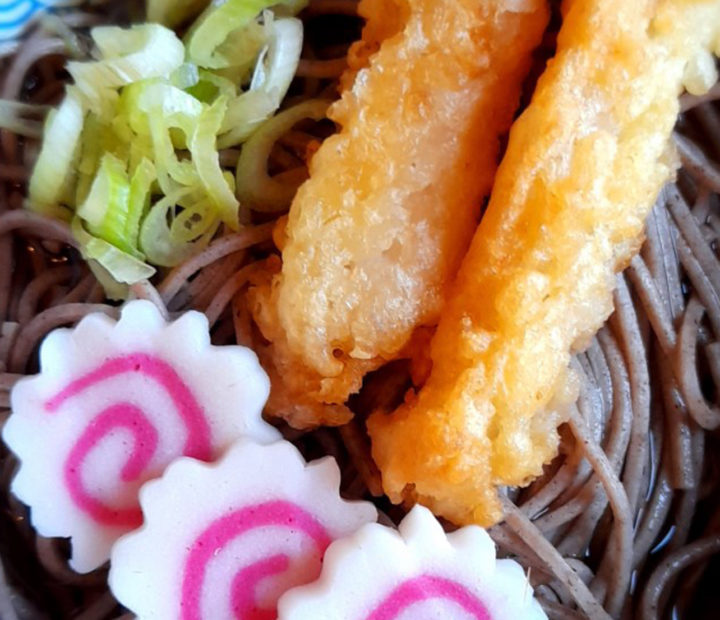29th Dicembre, 2020
New Year is Japan’s most important holiday – a chance for familial relaxation, reflection on the past months and optimism for the year ahead. Of course, No celebration of this magnitude would be complete without great food.
Japanese years are traditionally viewed as completely separate entities, with each new year providing a clean slate and a chance for a new start. Consequently, all duties and chores are supposed to be completed by the end of the year, with bonenkai parties (“year forgetting parties”) held with the specific purpose of leaving the old year’s worries behind. Like all good celebrations, Japanese new year is held across a number of days, where specific foods – eaten for their symbolic importance – are enjoyed.
To help mark the occasion, we have tasked our skilled development chef Ron Laity with creating some authentic and delicious recipes that will make any nen-matsu nen-shi (end and start of year) celebrations go off with flavoursome fireworks.
Toshi-koshi soba
Traditionally enjoyed on New Year’s Eve, Toshi-Koshi Soba (year-crossing noodles) is a simple and warming dashi broth typified by its long buckwheat noodles that symbolise longevity. Chef Ron has faithfully recreated this simple, yet delicious recipe.
Osechi Ryori
It’s no surprise that the most important meal of the year is also one of the most complex and intriguing. Similar to the classic bento box, Osechi Ryori is usually packed in 2-3 layers of lacquer boxes (ojubako) with many dishes, each serving as well-wishes for the coming year. Eaten with the family on New Year’s Day, Chef Ron offers some insights into its contents and what they symbolize
“Yellow Egg Roll or Datemaki is a sweet egg roll, the scroll-like omelette shape symbolizes the acquisition of knowledge and culture. Shrimp are included as a wish for a long life, even after your back has bent over like a shrimp! Burdock in Sesame Sauce or ‘Gobo’ is a thin and long vegetable whose roots are firmly planted in the ground and is supposed to bring good luck and stability to the household. Salmon Roe is eaten to wish for a prosperous family. Konbu Seaweed Rolls. Lotus Root Pickle is another vegetable that brings good luck. The many holes on the surface of renkon symbolize a good outlook for the future. Tatsukuri, also known as gomame, is a dish of small crispy sardines seasoned with sugar, soy sauce, and sweet sake. The name tatsukuri, literally translated as ‘rice farming’, comes from a custom to scatter baby sardines in a field as fertilizer, wishing for a good harvest. The kanji for gomame is written as 50,000 grains of rice, also symbolizing the wish for abundant crops.”
Kagami Mochi
Literally meaning “mirror rice cake”, Kagami mochi is a special delicacy consisting of two mochi – one sat on top of the other. Dedicated to the Gods during the New Year, the two mochi symbolize the going and coming years, or “yin” and “yang”. The kagami mochi is kept uneaten (for decoration purposes) until the 11th January, when people can – FINALLY – indulge in this delicious cake. Chef Ron has yet again been true to the original and authentic recipe, his hands still stinging from pounding the rice in the traditional manner!

Create i vostri tagliolini di Capodanno caldi e piacevoli con la nostra ricetta della Toshikoshi soba. Con le sette spezie giapponesi e la delicata dolcezza dell’Honteri e dei gamberetti tigrati, questo piatto scioglierà sicuramente le difficoltà dell’anno passato e darà il benvenuto al viaggio che ci attende.

Il rotolo di salmone Kombu o Kobumaki è un piatto che viene spesso servito il giorno di Capodanno come parte della festa degli osechi ryori. Il Kobumaki rappresenta la gioia e la parola ‘kobu’ significa gioia nella parola yorukobu.



Ever wondered why each year over three and a half million Japanese people make a beeline for KFC on Christmas Day? We reveal all, as well as introducing chefs to three incredible festive Japanese recipes

The 1st of November is Vinegar Day! We would like to take this opportunity to share our knowledge of Japanese vinegars from rice and sake vinegar to spirit vinegar. Each vinegar has its own distinctive taste which will enhance the flavour of a dish in a different way.

Due innovatori, due sedi, un obiettivo: ispirare la creatività! Abbiamo recentemente invitato uno dei baristi più entusiasti del Regno Unito a far parte della nostra nuova serie web, Chefs in Conversation, dove lo abbiamo sfidato a creare alcuni cocktail festivi utilizzando Honteri